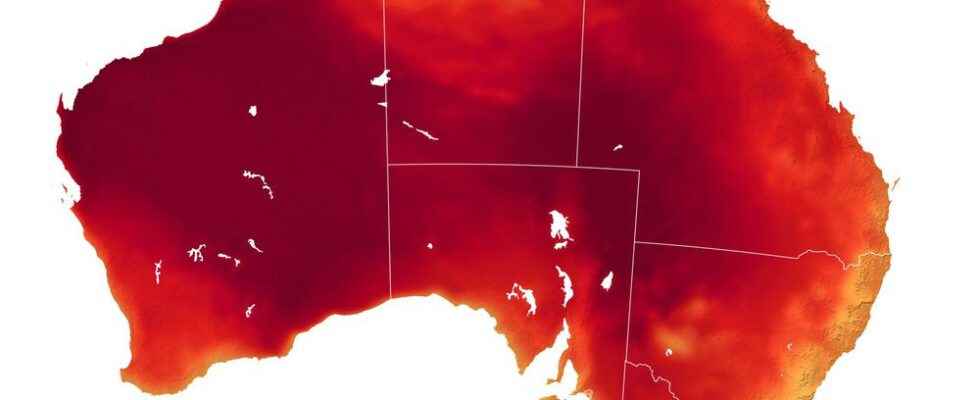While several cities have been covered in snow this week in the northern hemisphere, such as Istanbul, Jerusalem or Athens, south of the equator, we are suffocating. The austral summer has arrived, accompanied by extreme temperatures in some countries and cities. The heat records are linked, as in Córdoba in Argentina which recorded a peak of 42.5°C on January 11th.
Australia is experiencing record high temperatures this summer.
NASA
In Cape Town, South Africa, the mercury rose to 45.2°C on January 22, and even exceeded 50°C (50.7°C) in the town of Onslow, Australia, on January 13, lift him up Sunday Times. Australia has also become on this occasion the hottest region on the planet. The temperature recorded in the coastal town of Onslow hit an all time high.
New evidence of global warming
How can this multiplication of heat records be explained? “We notice a significant accumulation of records, we break eight to ten times more heat records than cold ones (…) If the average temperature rises, we are more often likely to have very high temperatures and beat Records”, highlighted Samuel Morin, researcher at Météo France and director of the National Center for Meteorological Research, interviewed by Reporterrea specialized information site.
Climate Council director Martin Rice said the record breaking by the town of Onslow is part of a long-term trend of global warming induced by the burning of coal, oil and gas. According to him, these extreme temperatures are already having “deadly catastrophic consequences” in Australia. “Heat waves are silent killers in Australia, they cause more deaths than any other extreme weather event,” he said.
More and more extreme events
They also have direct consequences on weather events. Australia experienced an austral summer marked by major forest fires in the west of the country and deadly floods on its east coast. On a global scale, we must then expect more drought, heat waves, forest fires but also floods. Indeed, “the rise in temperature increases the amount of water vapor that the atmosphere can contain, which promotes more intense precipitation”, explains Samuel Morin.
All this will have direct consequences on humans. “There are also issues of climate justice, because it is the most socio-economically vulnerable who are the most affected, and the poorest countries who suffer the most from the consequences of global warming”, warns Samuel Morin. Argentines have recently been able to experience the direct consequences of extreme heat. Argentina’s power grid has been heavily impacted by high temperatures, leaving more than 700,000 customers without power. Crops also suffer from drought and heat.
Wildlife in danger
Wildlife will not be spared either, starting with animals that inhabit regions affected by drought or in forest areas that are at risk of catching fire, as was the case during the forest fires that devastated the Australia in 2019-20. According to WWFthese fires caused the death or migration of three billion animals, including 5,000 koalas.
Consequences which are also true under the sea. The Great Barrier Reef off the coast of Australia is threatened by the rise in sea temperature. The country also unveiled on Friday a program of 700 million dollars for the protect, while it is strongly deteriorated by climate change. This phenomenon of dieback, which results in discoloration, is caused by the rise in water temperature which leads to the expulsion of the symbiotic algae giving the coral its bright color.
These temperature records come as the World Meteorological Organization (OMM) has already decreed the year 2021 as one of “the seven hottest years on record”, and that the seven hottest years have all been recorded since 2015, with the years 2016, 2019 and 2020 coming out on top. of the rank.
